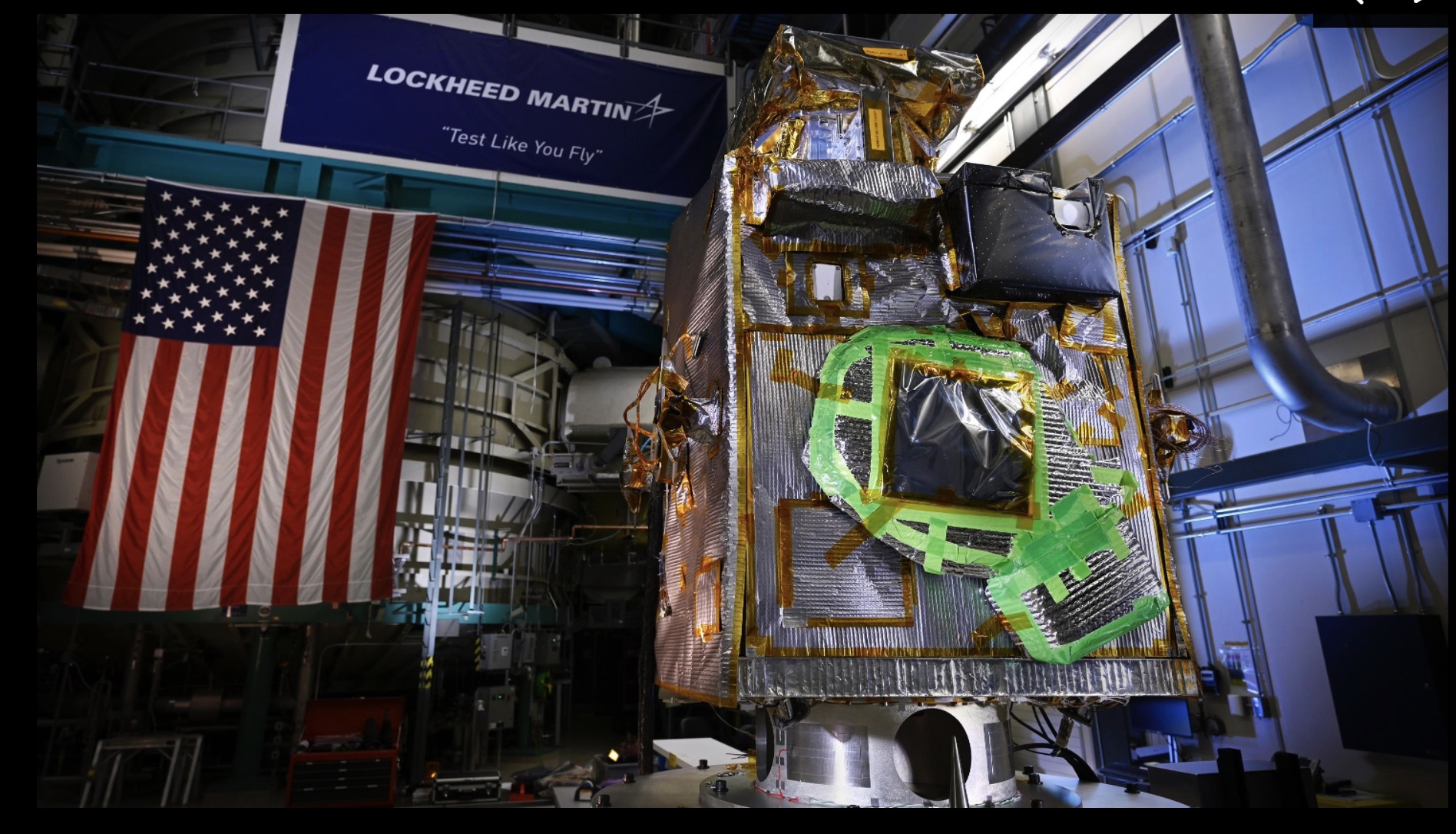19.08.2023

The spacecraft’s Lunar Thermal Mapper science instrument will work with an imaging spectrometer to help researchers understand the nature of water on the Moon’s surface.
NASA’s Lunar Trailblazer is nearing completion now that its second and final cutting-edge science instrument has been added to the small spacecraft. Built by the University of Oxford in England and contributed by the UK Space Agency, the Lunar Thermal Mapper (LTM) joins the High-resolution Volatiles and Minerals Moon Mapper (HVM3), which was integrated with the spacecraft late last year. Together, the instruments will enable scientists to determine the abundance, location, and form of the Moon’s water.
Led by Caltech in Pasadena, California, Lunar Trailblazer has a mass of about 440 pounds (200 kilograms) and measures only 11.5 feet (3.5 meters) wide with its solar panels fully deployed. The small satellite will rely on the LTM instrument to gather temperature data that will reveal the thermal properties of the lunar surface and the composition of silicate rocks and soils. The HVM3 imaging spectrometer, which was built by NASA’s Jet Propulsion Laboratory in Southern California, will detect and map the form, abundance, and locations of water in the same regions as the LTM instrument.
“Lunar exploration is an international endeavor, and Lunar Trailblazer embodies that spirit with the University of Oxford’s and UK Space Agency’s contribution to the mission,” said Bethany Ehlmann, the mission’s principal investigator at Caltech. “With the combined power of both of these sophisticated instruments, we can better understand where and why water is on the Moon and support the next era of Moon exploration.”
Launching before the Artemis program’s human landings, Lunar Trailblazer will return information about the Moon’s water, providing maps to guide future robotic and human explorers. Lunar water could be used in a variety of ways, from purifying it as drinking water to processing it for fuel and breathable oxygen.

NASA’s Lunar Trailblazer is shown here during thermal vacuum chamber (TVAC) testing at Lockheed Martin Space in Littleton, Colorado, in June 2023.
“The Lunar Trailblazer mission will improve our understanding of our natural satellite and how we could harness its resources to support exploration in the future,” said Libby Jackson, Head of Space Exploration at the UK Space Agency. “Backing missions and capabilities that will drive opportunities for humanity to venture deeper into space is one of our priorities, so it’s exciting to see the LTM instrument ready for launch.”
Lunar Trailblazer was selected by NASA’s SIMPLEx (Small Innovative Missions for Planetary Exploration) program in 2019, and the spacecraft will launch as a secondary payload on the second Intuitive Machines robotic lunar lander mission, called IM-2. That launch, which will also carry NASA’s Polar Resources Ice Mining Experiment-1 subsurface ice drill, is expected no earlier than early 2024.
Lunar Water Cycle
When Lunar Trailblazer arrives in orbit around the Moon, it will use HVM3 to map the spectral fingerprints – or wavelengths of reflected sunlight – of the different forms of water over the lunar landscape. LTM will scan those mapped regions at the same time to form an image that can be used to characterize the temperature of the surface. By measuring the same locations at different times of day, Lunar Trailblazer will determine if the amount of water changes on this airless body.
It is thought that some water molecules might be locked inside lunar rock and regolith (broken rock and dust), particularly those containing silicates, which are the most abundant mineral on the Moon. Other water molecules may move and settle for short periods as frost in cold shadows. As the Sun changes position in the sky during the lunar day, the shadows move. This causes the ice to sublimate, transforming into vapor without passing through a liquid phase. As the water molecules move in the Moon’s extremely thin atmosphere to other cold places, they can settle once more as a frost. The most likely locations to hold water ice in significant quantities are the always-cold permanently shadowed craters at the lunar poles, which are key targets for science and exploration.
“LTM precisely maps the surface temperature of the Moon while the HVM3 instrument looks for the spectral signature of water molecules,” said Neil Bowles, instrument scientist for LTM at the University of Oxford. “Combining the measurements from both instruments allows us to understand how surface temperature affects water, improving our knowledge of the presence and distribution of these molecules on the Moon.”
LTM will provide maps of lunar surface temperature from about minus 265 degrees to 266 Fahrenheit (minus 165 degrees to 130 Celsius) using four broadband infrared channels. The instrument will scan the lunar surface to form a multispectral image as the spacecraft orbits above. At the same time, 11 narrow infrared channels also map small variations in the composition of silicate minerals that make up the rocks and regolith of the Moon’s surface, providing more information about what the lunar surface is made of and how this may influence the amount of water present.
Lunar Trailblazer is undergoing final assembly and testing at Lockheed Martin Space in Littleton, Colorado, and the spacecraft recently completed thermal vacuum chamber testing that simulates the harsh environment of space. Now, with both instruments integrated with the spacecraft and undergoing final system-level testing, Lunar Trailblazer is approaching readiness to ship to Florida for final launch preparations.
More About the Mission
Lunar Trailblazer is managed by JPL and its science investigation and mission operations are led by Caltech. Managed for NASA by Caltech, JPL also provides system engineering, mission assurance, the HVM3 instrument, as well as mission design and navigation. Lockheed Martin Space provides the spacecraft and integrates the flight system, under contract with Caltech.
SIMPLEx mission investigations are managed by the Planetary Missions Program Office at NASA’s Marshall Space Flight Center in Huntsville, Alabama, as part of the Discovery Program at NASA Headquarters in Washington. The program conducts space science investigations in the Planetary Science Division of NASA’s Science Mission Directorate at NASA Headquarters.
Quelle: NASA
